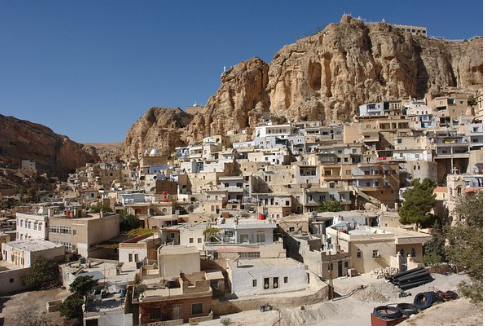Rural Damascus Governorate is located in west-central Syria, encircling the capital Damascus from all sides, making it an area of significant strategic and economic importance. It spans an area of approximately 18,032 square kilometers and is characterized by a diverse geography that combines mountains, fertile plains, and water-rich valleys.
1. Historical Overview
Rural Damascus Governorate boasts a rich history dating back thousands of years, having been part of numerous civilizations such as the Phoenicians, Romans, Byzantines, and Arabs. The rural lands surrounding the capital were a significant agricultural center in ancient times, and prominent historical events in the Islamic and Ottoman eras passed through them. The region has played important political and military roles, especially due to its proximity to the capital Damascus and its strategic location on ancient trade routes.
2. What is it Known For?
- Agriculture: It is one of Syria's most important agricultural regions, producing various types of fruits such as cherries, apricots, grapes, and apples, along with olives, vegetables, and grains.
- Religious and Natural Tourism: The governorate includes many ancient monasteries and churches that attract visitors, in addition to stunning natural sites like Barada Valley and Mount Qasioun, which are among the most important tourist areas surrounding Damascus.
- Handicrafts and Traditional Industries: It is famous for the production of pottery and traditional textiles, reflecting the region's rich heritage.
3. Key Tourist and Historical Landmarks
- Old City of Damascus: Located on the governorate's borders, it is considered one of the oldest continuously inhabited cities in the world, encompassing many historical and cultural sites.
- Damascus Citadel: Remains of a medieval fortress, representing significant historical and military importance.
- Monastery of Saint Sergius: One of the oldest Christian monasteries in the region, preserving a unique historical character.
- Barada Valley: A valley rich in trees and water, known for its picturesque nature and abundant springs.
- Mount Qasioun: A strategic landmark overlooking the city of Damascus, known for its scenic views and diverse geography.
4. Geography and Climate
The governorate features diverse terrain, including mountains like Mount Qasioun, and vast plains that cover large areas of agricultural land. It also includes multiple valleys such as the Barada Valley, considered one of the richest water-resource areas in Syria. The climate is moderate Mediterranean, with cold, wet winters and hot, dry summers, making it suitable for diverse agriculture, especially fruits and vegetables.
5. Culture and Customs
Rural Damascus Governorate is characterized by its authentic rural culture, intertwined with the urban influences due to its proximity to the capital. The governorate celebrates religious and social occasions with folk events that include traditional songs and dances. The rural cuisine is rich in popular dishes such as Maqluba, Fatteh, and Kibbeh, using fresh, local ingredients.
6. Economic Activities
Agriculture is the primary economic activity in Rural Damascus, relying on the production of fruits, grains, and vegetables that are promoted in local and international markets. There are some small and medium-sized industrial areas producing building materials, food, and textiles. Religious and natural tourism also contributes to supporting the local economy, especially in areas like Barada Valley and Mount Qasioun.
7. Major Cities and Towns
- Douma: One of the largest cities in the governorate, with extensive economic and agricultural activity.
- Al-Zabadani: Located in the mountainous regions, known for its moderate climate and charming nature.
- Qatana: Known for its ancient history and agricultural importance.
- Saqba: An agricultural city famous for its fruit production.
- An-Nabek: Located north of the governorate, characterized by its mountainous location and temperate weather.
8. Infrastructure and Services
The governorate boasts a developed road network connecting it to the capital Damascus and neighboring governorates, facilitating the movement of goods and people. It includes a large number of hospitals and health centers, and schools and universities are widespread, providing education at all levels. There are some challenges in rural areas regarding the continuous provision of water and electricity services, but continuous efforts are being made to improve the infrastructure.
9. Current Situation and Challenges
Rural Damascus Governorate has suffered from the effects of the conflict in Syria, with damage to some cities and villages like Douma and Al-Zabadani. Reconstruction efforts continue to rehabilitate infrastructure and improve essential services, despite the security and economic challenges facing the region. Governmental and international efforts are focused on supporting the population and restoring normal life to the governorate.
10. Prominent Figures
- Marwan Hadid: One of the most prominent contemporary Syrian writers and poets.
- Mohammed Al-Abed: A famous Syrian scholar and philosopher.
- Artist Sabah Fakhri: One of the most important singing voices in Arabic music.
- Prominent political and military leaders from the governorate.

